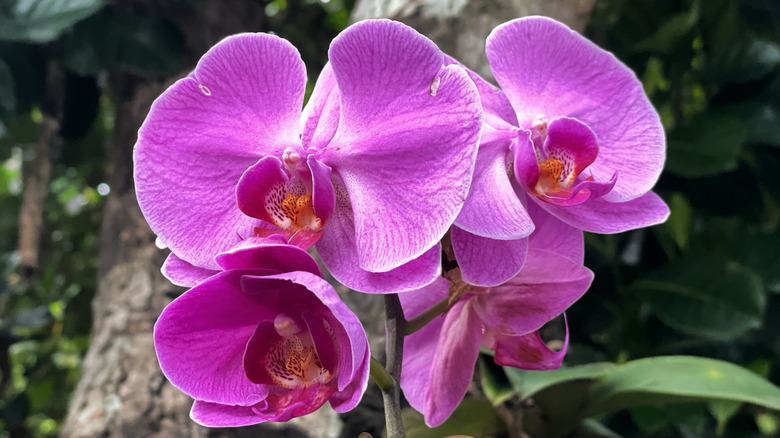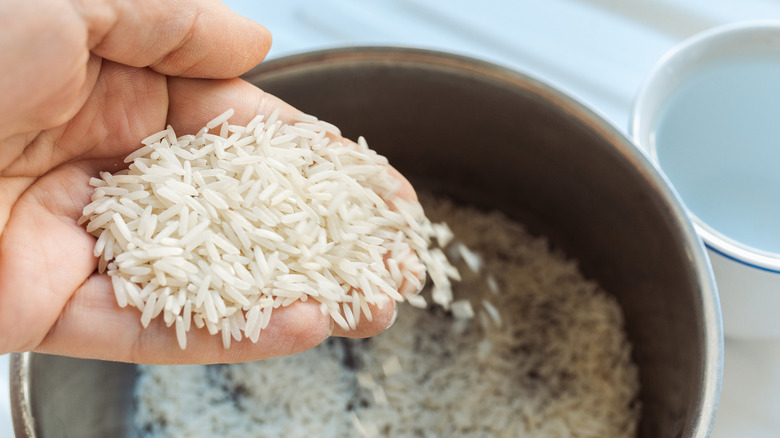Help Your Orchids Thrive And Flower With A Natural Remedy From Your Kitchen
We may receive a commission on purchases made from links.
A fresh bouquet of flowers is the perfect gift for any number of holidays, from birthdays to anniversaries. Orchids are among the most interesting to utilize given their huge diversity of shapes, colors, and scents growing on every continent (except Antarctica). It may not be the best Valentine's Day flower considering some orchids carry a hidden message of friendship, but that doesn't mean you should take them out of your flower-arranging catalog altogether. Orchids make great home decor, especially more easily grown varieties such as the moon orchid (Phalaenopsis), and keeping them indoors grants access to a common but unexpected natural fertilizer: rice water.
Water left over from cooking rice is the subject of many old wives' tales, such as using rice water treatments for healthier hair, but its efficacy as a fertilizer does have some scientific backing. One study out of the journal Heliyon showed plants that were treated with washed rice water (after it fermented for three days) had better plant growth, nutrient content, uptake, and soil nutrient levels. Using this natural fertilizer for something like your orchids will reclaim trace amounts of nitrogen, phosphorus, and potassium washed out of the rice, and is a healthy water governance practice for our planet. It's not a one-stop orchid miracle growth formula, of course, but supplementing best practices with rice water fertilizer is a great way to get your flora blooming better than ever.
Best practices for growing orchids at home (with rice water fertilizer)
Every orchid should be given its own consideration with regards to best growing practices, but there are some general ideas to be drawn from using moon orchids (also sometimes called moth orchids) as a baseline indoor houseplant for any room. They originate from more tropical regions of Asia and Australia, and thus prefer warmer, humid weather — fitting USDA hardiness zones 10 through 12, though most will keep them indoor as houseplants. Orchids thrive in neutral-to-acidic soils with bright, indirect light under an east or west window, mimicking their naturally arboreal habitats. If you want to give your rice water fertilizer the best shot of sinking in, grow it in well-drained, aerated soil. Rather than typical flower pots, consider using containers with more and larger drainage holes for your moon orchids, like this two-pack of ceramic pots from Buymax.
Of course, growing your blooming orchids indoors with the best access to rice water fertilizer means you'll have to keep a consistent temperature — particularly if you live in colder regions and have to take more steps to prepare your home for winter. Most orchids grow well in an "intermediate" 70- to 80-degree Fahrenheit environment, though the Phalaenopsis species prefer an even warmer 75 to 85 degrees. Consider putting your plants in a tray with pebbles and water to help achieve their preferred 40 to 60% humidity, which is one great avenue for adding your rice water. With this natural fertilizer in hand, you can really help your orchids thrive, whether they're going to be a gift or simply a nice piece of home decor for yourself.

